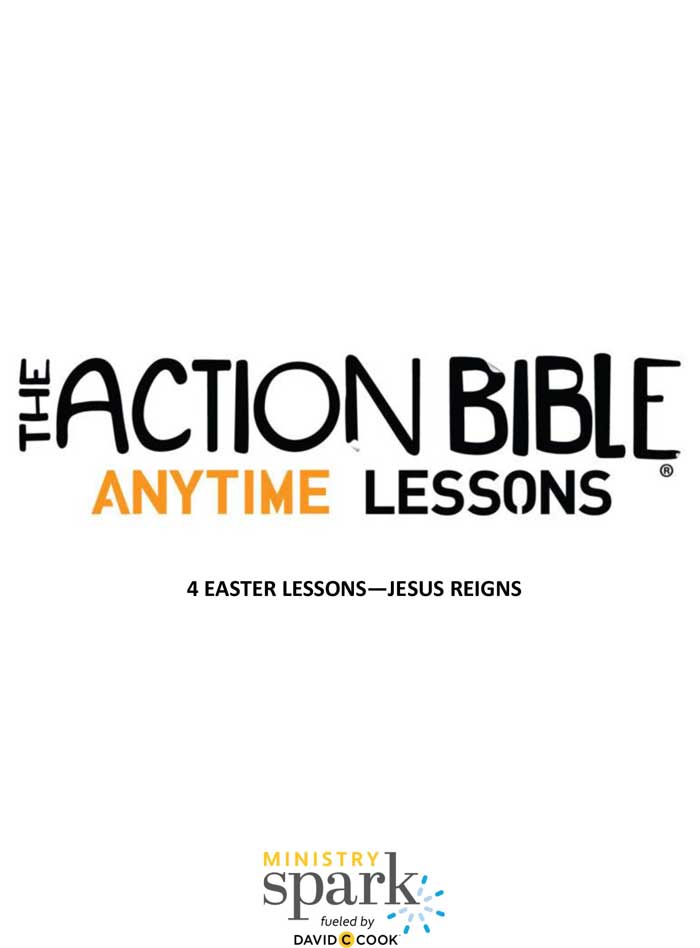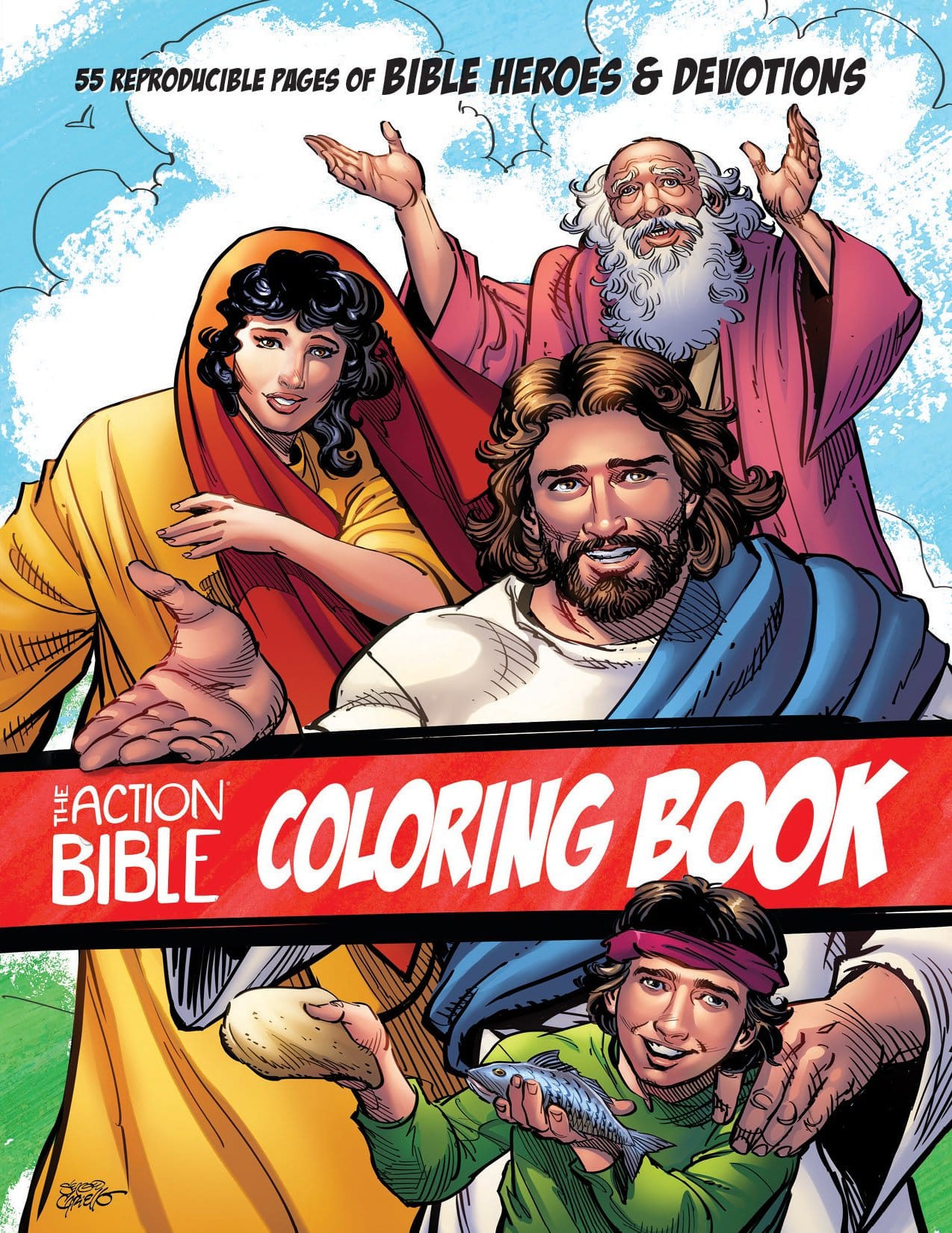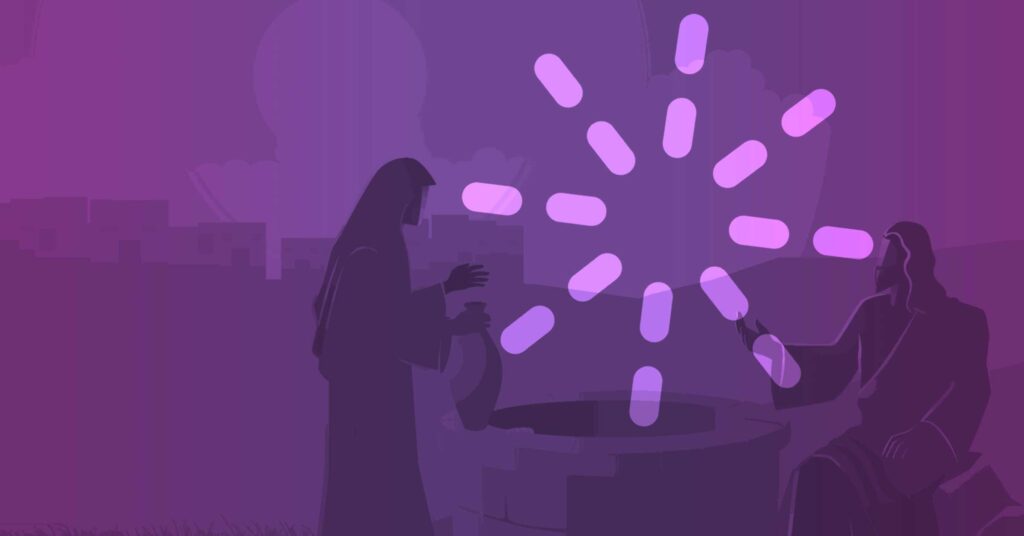Another mom spotted me at the neighborhood playground. She made her way to me, and the normal get-to-know-each-other questions flowed. “What kind of work do you do?” the mom inquired.
I responded that I work on children’s Bible curriculum. Her eyes got big, and she exclaimed, “That’s so great!” I thought perhaps she is a regular church attender but learned that she once attended a mom’s group at a church and heard devotionals.
Through that experience, she learned she doesn’t want others to tell her what the Bible means. She wants to read it for herself.
“I researched and bought a once-a-day chronological Bible. It was very helpful.” She went on, “I kept up with it for a while. It answered some of my questions, and I still have more.”
“I’m glad!” It was time to go in so I let her know, “If you ever want to talk more about the Bible, I completely nerd out over the Bible and would love to chat.”

At the end of the conversation, I felt relieved this mom didn’t start trying to read all of Genesis and move through the Bible from there. Although the Bible starts with creation, soon the pages get into all kinds of people from Noah to Abraham to Joseph.
Then, in between, we have Cain killing his brother, Esau trading his birthright for stew, and Laban tricking Jacob. It could cause one to wonder, what is happening? And then shut the Bible while missing the point.
Where to Start in Exploring the People of the Bible
The point is that the Bible is about God. He is who it is all about. He moves His Story along. He has a plan for mankind. His plan includes Jesus.
Where would I suggest a new Bible reader begin then? The book of John.
In the first few verses of John, we encounter the same main idea found in the first few chapters of Genesis. Jesus is the Word. He was there in the beginning. Nothing was made without Him. Nothing is redeemed without Him.
The point is that the Bible is about God. He is who it is all about.
He is everything.
In fact, if we were to ask the average person who at least attends church at Christmas, they could probably tell you that Jesus is central to Scripture. They would know simple facts about Him too, like that fact Jesus was born in Bethlehem.
But would those same people know why Jesus was born in Bethlehem and how that whole event came to be?
For that story to make sense, we need Abraham’s lineage in Genesis. Then, we need God’s promise to Moses in Exodus. After that, there’s Joshua entering the land that later has Bethlehem. Foreigner Ruth lands in Bethlehem. The prophet Samuel anoints David in Bethlehem. We haven’t even hit what the prophets say.
Now we have ourselves a story! And it’s all connected to Jesus.

People of the Bible: Through a Cultural Lens
Once upon a time, God told a man named Abraham to sacrifice his only son—the miracle son it took years to receive—on a mountain. Abraham agreed, and up the mountain he went with his son Isaac in tow.
Now, let’s compare God to the other gods of that time. Cultural understanding can help us understand that the other gods people worshipped were heartless and terrible. The people in surrounding countries sacrificed their children to appease their gods. They were afraid. They made these harmful choices because they thought these actions would keep them alive.
Thus, when God called out to Abraham and told him to kill his son, Abraham agreed. But what happened on that mountaintop? God, the true God who worked through Abraham to later bring Jesus into the world, provided an animal to sacrifice. He showed Abraham that He is not like other gods. He is good. God is loving. He saves.
In the New Testament, it helps to recognize that Jesus grew up Jewish. He participated in Jewish traditions. He memorized the Torah (the first five books of the Bible) because that’s what Jewish boys did. Before I realized such things, I thought Jesus knew Scripture because He was God, not because He learned it along with His peers.
Understanding ancient culture helps us understand why God did what He did at those times in history. It helps us to see more about what God is doing through His people, whether it’s the Old Testament or the New Testament.
God is loving.
Remember the Overarching Narrative
It’s easy to look at some of the amazing things people in the Bible did and want to model their courage, faith, and willingness to obey God in our own lives. We also may use these stories about people in Scripture to instill character into the kids we teach.
Certainly, good character is … well … good. It is even the result of faith (Romans 5:1-3). But it is not the point. To get to the point of a passage, it helps to ask these questions:
What is God doing here? How does this fit into God’s Story? Where do we see God working through His people and for His people?
Where Are They in the Story?
When teaching a Bible story or lesson, it’s important to help kids understand the times when different people in the Bible lived. Otherwise, kids may begin to imagine that Moses lived at the same time as Peter. But God was working in very different ways when these different men lived!

One way of helping kids realize the order of people in God’s story is a timeline. You can create your own or search online for a resource.
Within Scripture, it can be effective to take time to stop at places where the genealogies of God’s people are listed such as Matthew 1 and Luke 3. Do the kids recognize any names? What name is first? What name is last?
Additionally, the apostles gave overviews of God’s narrative multiple times in the New Testament. Some of the places that can be found are Acts 2 and 3. Many people in the early church believed in God because they heard how He had worked through His people over thousands of years.
One other important place to get a view of God’s faithfulness is in Hebrews 11. In this passage, children can see their place among the other people of the Bible. God is at work in their lives too, just as He was thousands of years ago and will be forever. From Noah to Joseph to Rahab and Deborah and Peter and Paul, we are all an important part of what God has planned since the beginning of time.
All these people were praised because they had faith. But none of them received what God had promised. That’s because God had planned something better for us. So they would only be made perfect together with us.
Hebrews 11:39-40 NLT
And, finally, it’s important that we recognize the people of the Bible are just that—real people. People who experienced joys and fears and hopes and dreams—just like we do. When kids understand they are not characters, but, in fact, people just like them, it comes all the more alive to them.
Helpful Resources from David C Cook

The Action Bible Anytime Easter Lessons

The Action Bible Coloring Pages








